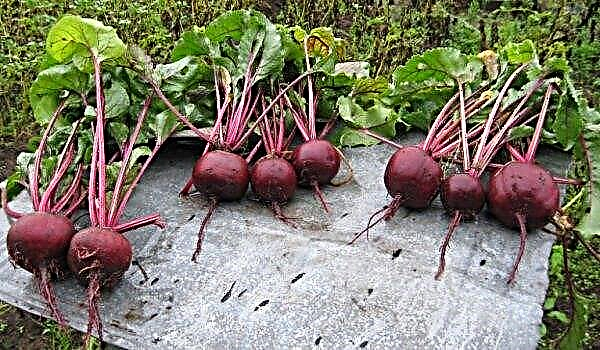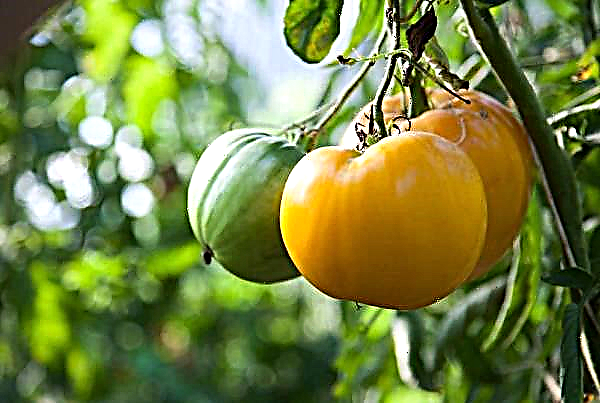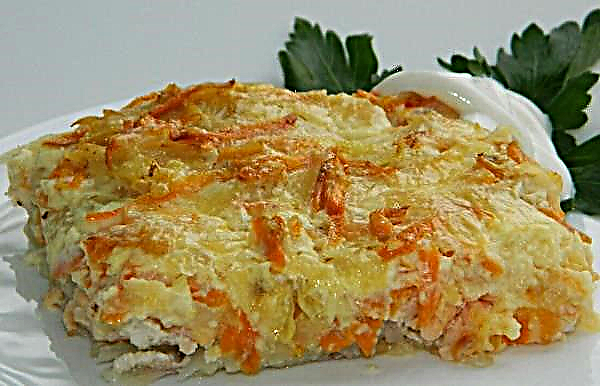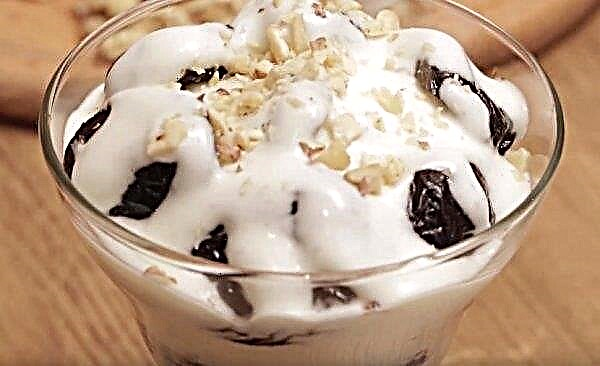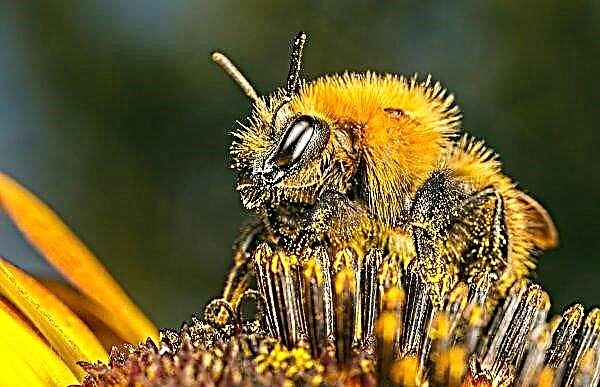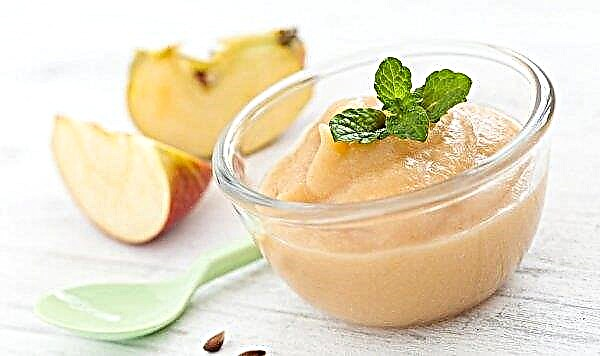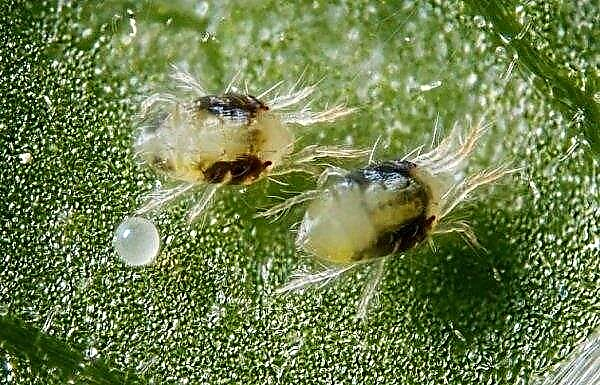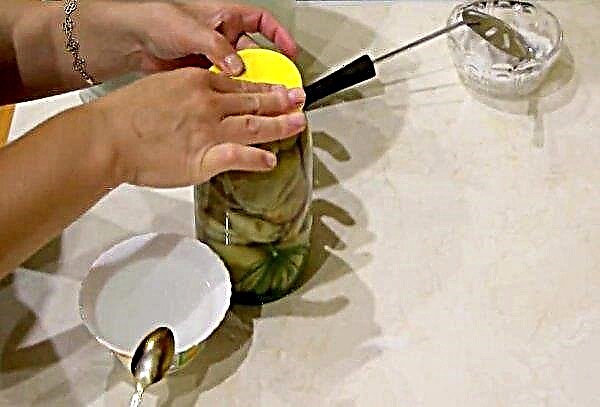The desire to obtain a greater volume of meat products from poultry draws the attention of farmers to broiler breeds of chickens. What is the advantage and whether there are minuses for broilers, as well as the rules for their maintenance - this will be discussed today.
Broiler Chicken Content
A broiler is a hybrid breed resulting from multiple crosses. Breeders have been breeding meat chickens for decades, taking into account not only the large mass of birds, but also disease resistance.
Did you know? The English word "broil", from which the name comes from meat breeds, in translation means "fry".
Benefits
- The main among the advantages of hybrids over other breeds is a quick mass gain, as well as other advantages:
- carcass weight (some individuals up to 7 kg of live weight);
- lack of aggression (coexist peacefully with other individuals even with cellular content);
- economy (feed costs pay off in 1.5–2 months);
- strong immunity (resistance to main diseases of chickens).
Disadvantages
- Among the obvious shortcomings are noted:
- low egg production;
- high requirements for feed (poor-quality feed can cause death of young animals).
The best breeds of broilers with a description
Among the meat breeds there are record hens that are preferred by both large poultry farms and small farms. A list of the best individuals with a description later in the article.
ROSS-308
The bird is distinguished by a large body with well-developed muscles, with a wide and convex chest. Widely spaced limbs are distinguished by large hips, skin on the legs of a yellow color. The head relative to the body is small, with a red leaf-shaped crest. Earrings are poorly developed, the beak is curved, yellow. The plumage is snow-white, dense and dense. Productive Features:
Productive Features:
- egg laying - 200 pcs. per year, egg weight - 60 g;
- meat yield - 74%;
- age at the bottom - 2 months;
- carcass weight - 3-5 kg;
- the survival rate of chicks is 98–100%.
COBB-500
Hens of a large physique, with a voluminous sternum and short but powerful paws. The wings are firmly pressed to the body. The head on the long neck is small, crowned with a bright red crest and small earrings of the same color. The bill is gray-yellow, massive. The plumage is white, friable, the skin on the legs is gray-pink.
Important! Improper content of COBB-500 can provoke biting in young animals, up to a fatal outcome.
Productive Features:
- egg production - less than 100 pcs. per year, egg weight - 58 g;
- slaughter for meat - 40-60 days;
- carcass weight - 3 kg;
- meat yield - 73%;
- survival of chicks - 94–97%.

Gibro 6
Cross is distinguished by a slender physique, not too convex chest and long limbs. The femur is well defined, the skin of the legs is yellow. The medium-sized head is decorated with a bright red large crest and long red catkins. The plumage is white, tight to the body.
Productivity:
- egg production - 150 pcs. per year, egg weight - 60 g;
- age for slaughter - 1.5–2 months;
- carcass weight - 2 kg;
- meat yield - 72%;
- survival of chicks - 98%.

Broiler 61
The large body has a wide, massive back and convex chest. The plumage is white, slightly loose. The comb and earrings on a small red head are poorly expressed. The skin on the legs is a grayish-yellow hue.
Important! At 5 weeks of age, young animals are restricted in feed, a fragile skeleton can not withstand heavy weight, which will lead to problems with the limbs.
Productivity:
- egg laying - 160 pcs. per year, egg weight - 62 g;
- age for slaughter - 1.5 months;
- carcass weight - 1.8 kg;
- meat yield - 80%;
- the survival rate of chickens is 98%.

Hubbard F-15
One of the largest representatives of meat breeds. Powerful body, on legs wide apart with voluminous hips. A broad back, a small head with a poorly developed crest and red earrings. The beak is short, but strong, bent, pale yellow. The plumage is snow-white, the skin on the legs is pale pink.
Productivity Characteristics:
- egg production - 200 eggs, weighing 60–65 g;
- slaughter for meat - 2 months;
- carcass weight - 2.5–4 kg;
- meat yield - 80%;
- survival of chicks - 98%.

How to choose a good individual
To avoid problems, you need to understand the criteria for choosing healthy chickens:
- newly hatched chicks are mostly sleeping, but you need to pay attention to their appearance. The plumage should be completely dry, without bald spots;
- a healthy chicken sleeps sitting or standing, if it lies on its side, it means it is sick;
- the head of the chick is slightly lowered, eyes and beak are closed tightly;
- to make sure the chicken is healthy, you need to disturb it. A healthy individual will shake, and the patient will remain lying;
- a healthy individual has a proportional body structure and stands firmly on its feet;
- the chicken should also be moderately well-fed, severe thinness is a sign of ill health;
- chicks should have clean mucous membranes of the eyes, outlines around the beak and nostrils;
- There should be no stool marks around the cloaca.
Did you know? The largest companies selling and growing meat breeds are investing heavily in genomic research, which helps to select the best manufacturers of crosses.
Features of maintenance, care and feeding
For most broiler breeds, a cage method is recommended.
- The advantages of the method are obvious:
- placing a large number of individuals in a small area;
- reduction of energy costs;
- optimal heating and humidity conditions.
Recommended cell size 1 m wide at 40 cm high. Necessary microclimate for poultry:
Necessary microclimate for poultry:
- humidity - 60–70%;
- temperature - + 28 ... + 35 ° С.
The chicken coop should be plastered, protected from draft and penetration of rodents. Be sure to consider the ventilation system. Before settling, the birds carry out a disinfection procedure. In the future, disinfection is carried out once a month, drinkers and feeders are washed daily.
Adults
Up to 8 adults are placed on 1 m² of area. Cages are equipped with a litter collection tray, feeders and drinking bowls.
To get a tasty and tender meat, the bird menu should be balanced and include:
- proteins;
- fiber;
- vitamins;
- minerals.
Components of an optimal diet:
- grain (crushed);
- cake;
- boiled potatoes;
- greenery;
- mixers on water or serum;
- wheat bran;
- bone flour;
- a piece of chalk;
- salt.
 An adult herd is fed at the same time, 2 times a day. Drinking water should be warm up to + 30 ° С. For the prevention of diseases three times a week, a weak pink solution of potassium permanganate is added to the drink.
An adult herd is fed at the same time, 2 times a day. Drinking water should be warm up to + 30 ° С. For the prevention of diseases three times a week, a weak pink solution of potassium permanganate is added to the drink.Chickens
Chickens need cells from a small cell, it is advisable to tighten the edges of the cage with a dense tissue 10-15 cm all over the circuit. Either an incandescent lamp or an infrared heater, which serves as both a light source and a heat source, is hung above the cages in the center. Place 20 individuals 1 m².
In the first week of life, chicks are fed up to 8 times a day, starting from 2 weeks - 6 times. Up to 2 weeks they are drunk exclusively with boiled water, adding a decoction of wild rose or chamomile.
Sample ration:
- 1-2 day - boiled egg, milk, low-fat cottage cheese;
- 3-4 days - the same, add greens, sprouted grains of barley, hay flour;
- from the 5th day, bone meal, crushed eggshells, chalk are added to the diet;
- from the 10th day - boiled carrots, millet and oatmeal;
- from 2 weeks - corn grits, barley (crushed).
 Growing meat chickens can be a profitable venture. The main thing in growing is to take into account the conditions necessary for the bird and provide it with proper care. The quality and taste of the meat obtained at the exit will depend on the proper nutrition of chickens.
Growing meat chickens can be a profitable venture. The main thing in growing is to take into account the conditions necessary for the bird and provide it with proper care. The quality and taste of the meat obtained at the exit will depend on the proper nutrition of chickens.

